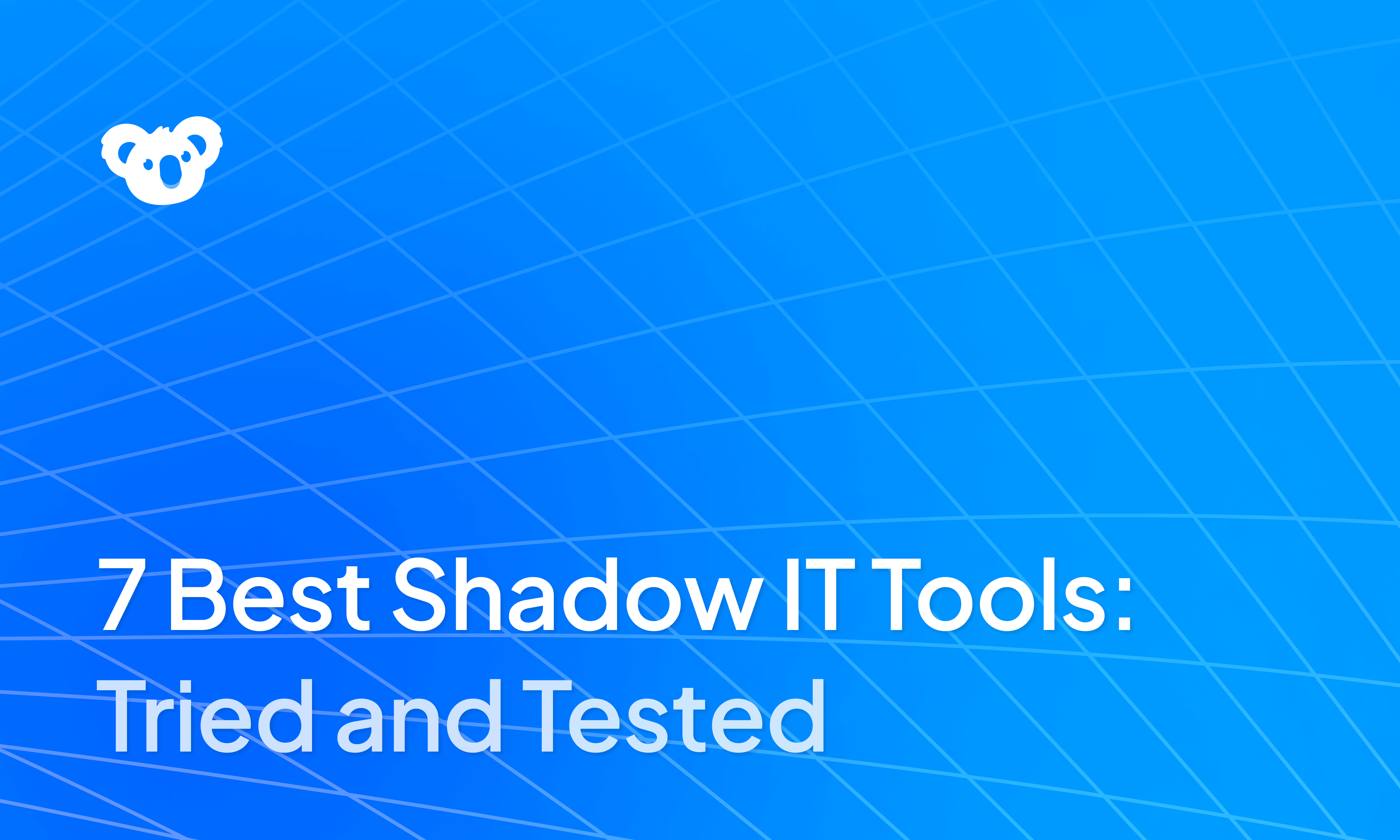


I’ve built apps with both AI app builders and AI app platforms. Some were prototypes, others became real tools for my team. Here are their differences and how to know which one fits your next project.
What is an AI app builder?
An AI app builder turns natural language prompts into working applications quickly, usually within minutes. Popular examples include Lovable, v0 by Vercel, and Bolt. You describe what you want, and they generate the interface, logic, and some support deployments.
Core capabilities of AI app builders
- AI-generated UI and layouts: They can design screens, dashboards, and forms automatically from text prompts. Builders auto-generate front-end or back-end code snippets, sometimes editable, so you don’t start from scratch.
- Instant hosting or preview environments: Most builders include one-click deployment or sandbox previews so you can share or test what you’ve built quickly.
- Prebuilt templates and starter kits: To make prototyping faster, builders include ready-made templates for dashboards, CRMs, or landing pages that you can modify with AI.
- Prompt-to-code: These tools use Large Language Models (LLMs) to interpret plain English descriptions and generate the corresponding application code. The more specific the prompt, the better the result.
- Workflow automation: Builders can create business logic, database schemas, and handle data transformations.
Who uses AI app builders and why?
The primary users of AI app builders are individuals and teams who prioritize speed and ease of use over deep technical control.
This includes:
- Solo developers and indie makers building quick prototypes or validating concepts.
- Startups with limited engineering resources racing to prove product-market fit.
- Product managers and designers creating mockups that go beyond static wireframes.
- Business teams solving specific problems with domain knowledge but limited technical skills.
Pros of AI app builders
- You can go from idea to working prototype in minutes.
- Anyone can describe what they want in plain English and get a usable app.
- You can test layouts, flows, and ideas before involving developers or investing in infrastructure.
- You can instantly share or demo what you’ve built without dealing with servers or building pipelines.
Cons of AI app builders
- You’re often stuck with whatever stack or template the builder uses.
- Builders may have limits on users, data storage, or performance that are unsuitable for large-scale enterprise use.
- Even when they let you export code, the output can be messy or hard to maintain.
- Most builders lack enterprise-grade features like SSO, RBAC, audit logs, or integrations.
What is an AI app platform?
An AI app platform provides an integrated environment for the entire application lifecycle from initial creation through deployment, monitoring, and ongoing management.
Examples include Superblocks and ToolJet. They combine AI-assisted development with infrastructure, governance, and operational capabilities.
Core capabilities of AI app platforms
- AI-assisted development: Like builders, they include AI copilots or prompt-based generation.
- Integration with enterprise systems: They connect to databases, APIs, and third-party tools like Salesforce, ServiceNow, or internal REST endpoints.
- Governance and security: AI app platforms usually come with RBAC, SSO, and audit logs.
- Full lifecycle management: They support version control, staging environments, CI/CD pipelines, and monitoring apps in production.
- Flexible deployment options: They let you choose where apps run, whether cloud or on-prem, through deployment agents or self-hosted runtimes.
Who uses AI app platforms and why?
Anyone who wants AI’s acceleration without losing the structure and reliability of enterprise software can use AI app platforms.
They include:
- Enterprise engineering teams building internal tools that connect to existing business systems. They want AI speed but can't sacrifice security or governance.
- IT and operations teams creating automation workflows and administrative dashboards.
- Product and platform teams standardizing development practices across multiple teams.
Pros of AI app platforms
- You can design, develop, deploy, and manage apps in one place
- They connect securely to databases, internal APIs, and third-party systems
- Features like SSO, RBAC, audit logs, and on-prem deployment make them compliant with IT and security requirements.
- Developers, IT, and ops teams can work together within a single governed environment.
Cons of AI app platforms
- While AI speeds up development, configuring environments, managing infrastructure, and setting up permissions still take time and effort.
- The sheer number of features and capabilities can be overwhelming.
- Some platforms rely on proprietary runtimes or connectors, which can make migration tricky.
- For MVPs or prototypes, the power of a full platform might be unnecessary.
AI app builder vs AI app platform: Key differences
An AI app builder is a quick, easy tool for creating AI apps from prompts, while an AI app platform is a structured environment for building, deploying, and managing many apps securely across your company.
Here’s a side-by-side comparison:
Where they overlap
Both AI app builders and AI app platforms use AI to help you create apps faster. They both can generate UI components, connect to data sources, and deploy your apps.
This difference shows up in practical ways:
- A builder might generate a beautiful customer dashboard in minutes, but struggle when they need to integrate it with their existing authentication system.
- A platform might require more setup time initially, but it provides the infrastructure needed to deploy that dashboard securely to hundreds of users.
Interestingly, these two categories are converging.
For example, Lovable recently announced a feature called Lovable Cloud and AI, which is a built-in backend for Lovable apps that handles databases, authentication, file storage, service connections, etc. All triggered via natural-language prompt rather than manual infrastructure setup.
How to choose the right tool?
The choice between an AI app builder and an AI app platform comes down to matching the tool to the task. Use builders when speed and experimentation matter most. Choose platforms when governance, scale, and longevity are priorities.
Here’s how to think about it:
- Speed vs. control: They’re all fast. But platforms also prioritize extensibility via integrations and may offer other building options like visual or code.
- Security and governance needs: If your application will handle sensitive data, serve external customers, or operate in a regulated industry, a platform's governance capabilities are essential. Builders typically lack fine-grained access controls, audit logging, or deployment options for compliance.
- Scalability and longevity: Think about the app’s lifespan. Builders are great in short-term pilots and proofs of concept. Platforms are designed for long-term maintenance, multi-user scaling, and enterprise data loads.
- Deployment and hosting preferences: Builders generally manage deployment for you. Platforms, on the other hand, offer multiple deployment models, including cloud, private cloud, or on-prem.
Example scenarios
To see when each makes sense, here are two quick examples.
A small startup with no dedicated dev team can use a builder like Lovable to generate the frontend and connect it to Supabase. They don’t need to worry about scaling or complex infrastructure. Their goal is to ship fast, collect user feedback, and prove the idea works. If it takes off, they can rebuild later on a more scalable stack.
An enterprise rolling out an AI app in a regulated industry can’t take that shortcut. They need to ensure the app is secure, compliant, and scalable. Using Superblocks, they can design the UI, connect to internal databases, and enforce RBAC and SSO for access control. For deployment, they can keep sensitive data on-prem.
Where AI app builders and platforms are headed next
The line between builders and platforms keeps blurring as both evolve.
Here are the three biggest trends shaping where this space is going:
The rise of AI-augmented development platforms
Low-code and no-code platforms are getting smarter. Instead of relying solely on drag-and-drop interfaces, they’re starting to include AI-assisted workflows. Examples include Retool, Softr, and UI Bakery.
Governance and data infrastructure as differentiators
Research highlights that model drift, privacy, data access, auditability, and compliance are major concerns for AI systems. Platforms and builders will need strong governance with audit logs, role controls, and integration with enterprise systems to stay relevant.
From tools to autonomous AI systems
Right now, AI app builders and AI app platforms are tools that help humans build faster. But the next evolution is toward agentic systems that can plan, build, deploy, and maintain apps with minimal human input.
The bottom line
AI app builders excel at the zero-to-demo journey. AI app platforms excel at the demo-to-production journey.
If you're exploring ideas, validating concepts, or building personal projects, builders offer unmatched speed and simplicity.
If you're building tools for your team or company, especially with sensitive data or complex requirements, platforms provide the governance and scalability you'll eventually need.
Build secure, governed internal tools with Superblocks
The best AI development platforms make it easy for teams to build while giving IT full visibility and control.
Superblocks addresses these needs with an extensive set of features:
- Flexible development modalities: Teams can use Clark to generate apps from natural language prompts, then refine them in the WYSIWYG drag-and-drop visual editor or in code. Changes you make in code and the visual editor stay in sync.
- Context-aware AI app generation: Every app built with Clark automatically abides by organizational standards for data security, permissions, and compliance. This addresses the major LLM risks of ungoverned shadow AI apps.
- Centrally managed governance layer: It supports granular access controls with RBAC, SSO, and audit logs, all centrally governed from a single pane of glass across all users. It also integrates with secret managers for safe credentials management.
- Keep data on prem: It has an on-prem agent you can deploy within your VPC to keep sensitive data in-network.
- Extensive integrations: It can integrate with any API or databases. These integrations include your SDLC processes, like Git workflows and CI/CD pipelines.
- Forward-deployed engineering support: Superblocks offers a dedicated team of engineers who’ll guide you through implementation. This speeds up time to first value and reduces workload for your internal platform team.
If you’d like to see Superblocks in action, book a demo with one of our product experts.
Frequently asked questions
Can an AI app builder become a platform?
Yes, an AI app builder can become a platform as it adds features for deployment, integration, and governance.
How do builders integrate into platforms?
Builders serve as the app generation layer within a larger development ecosystem.
What are the cost differences between a builder and a platform?
Builders are typically more affordable for individuals or small teams, but their costs can increase with higher usage or added features. Platforms tend to have higher upfront costs due to enterprise features such as SSO, RBAC, on-prem deployment, and multiple team seats, though many offer flexible pricing models.
Are there hybrid solutions that combine both?
Yes, many modern platforms, including Superblocks and Retool, now offer integrated AI app generators. You can start with prompt-based app creation and then scale up to production-level operations in the same environment.
Stay tuned for updates
Get the latest Superblocks news and internal tooling market insights.
You've successfully signed up
Request early access
Step 1 of 2
Request early access
Step 2 of 2
You’ve been added to the waitlist!
Book a demo to skip the waitlist
Thank you for your interest!
A member of our team will be in touch soon to schedule a demo.
Table of Contents






